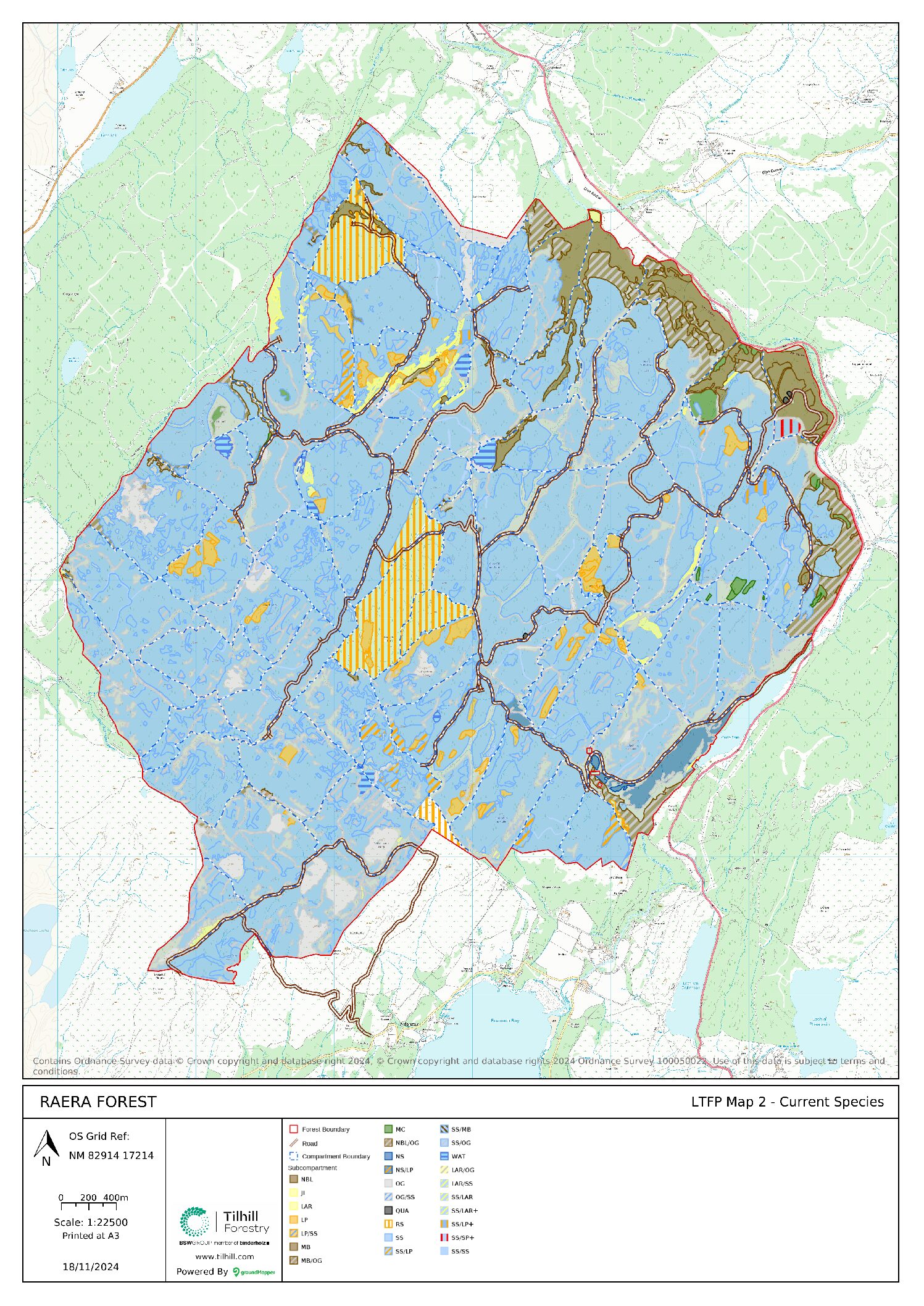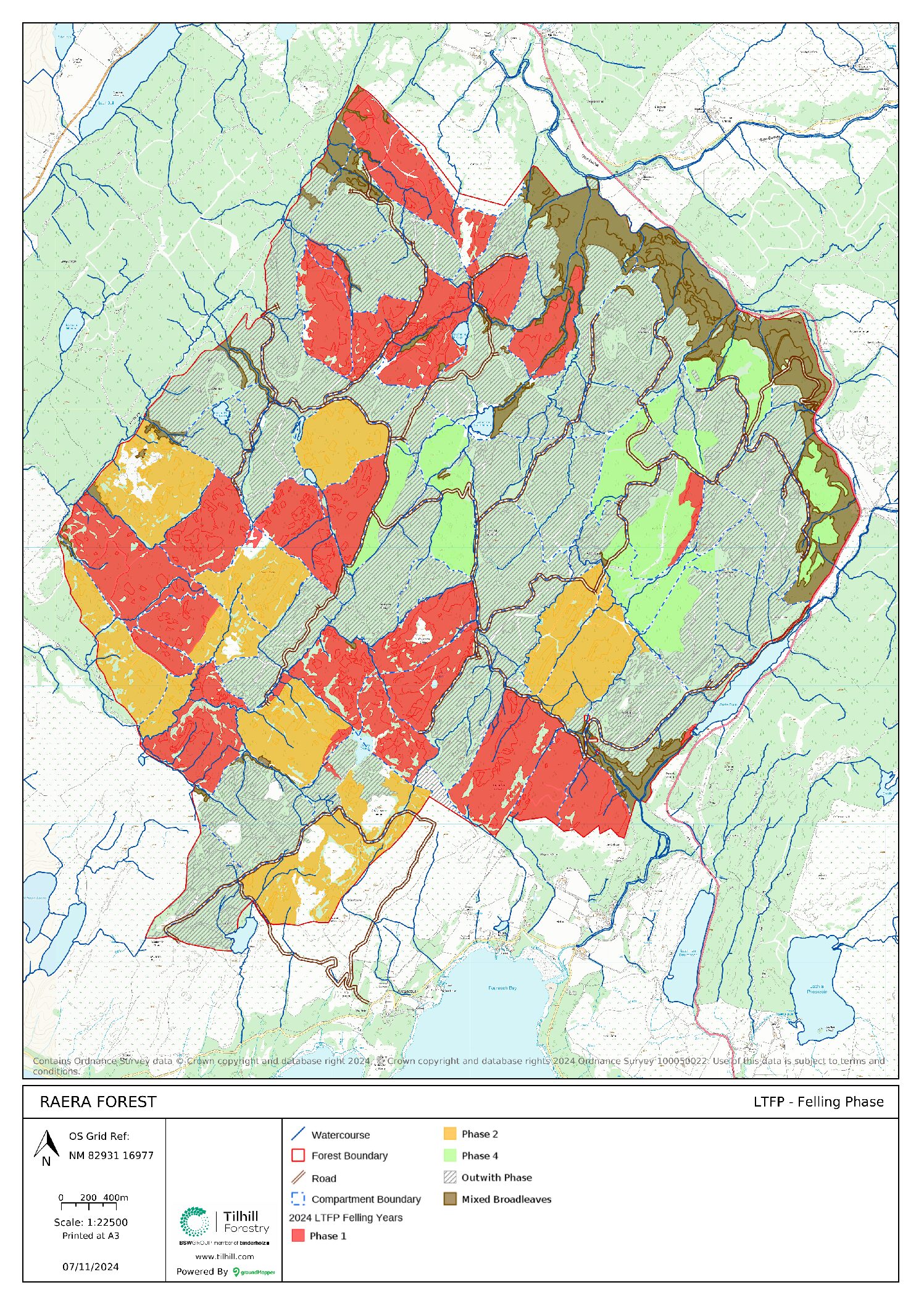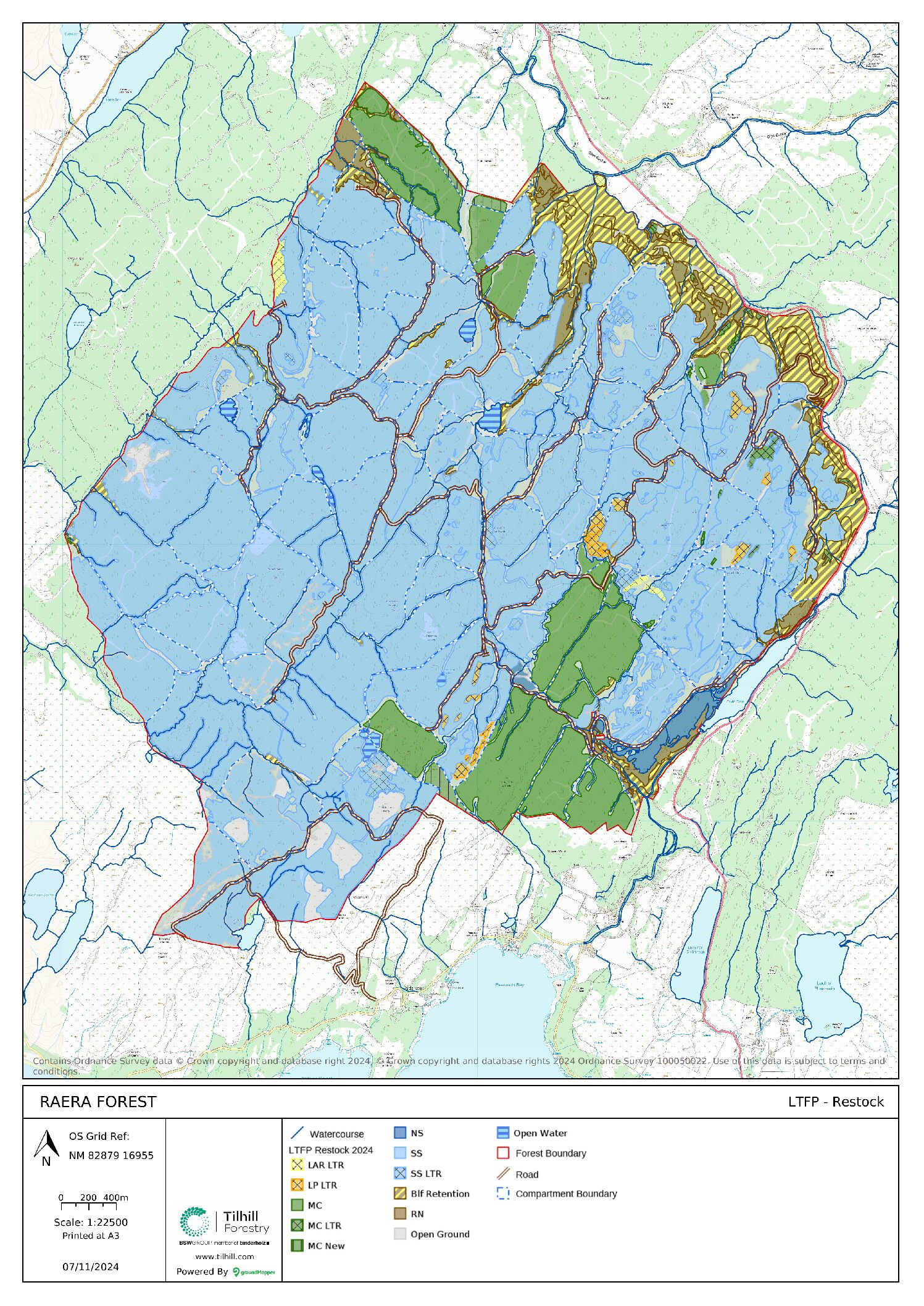We want to hear from you
We want to hear from you. Please take part in the initial consultation survey at the bottom of this page, or submit comments per the instructions in the scoping document available below.
Any comments regarding the certification of Raera can also be copied to:
- Jullian Hollingdale MICFor. Forest Certification & Development Manager, Tilhill Forestry, 10 Lotland Street, Inverness, IV1 1PA
- Soil Association Certification, Spear House, 51 Victoria Street, Bristol, BS1 6AD
What’s Happening?
Raera Forest has recently changed ownership and the new owner has engaged Tilhill Forestry to provide forest management services and to prepare a Long-Term Forest Plan, integrating the owner’s objectives in line with the UKFS and UKWAS.
FAQs
1. What is being proposed for the woodlands in Raera?
This Long-Term Forest Plan (LTFP) will cover the entirety of Raera Forest, circa 2136 hectares (ha), with 1 hectare equalling an area of 100m x 100m. The forest was originally planted between 1969-1986 and within the 2136ha there are around 1609ha of commercial conifers, of which 730ha are due to be harvested in the next 10 years.
As such the plan will set out proposal for felling and replanting of these areas, along with works required to facilitate this and any works required to make the forest compliant with today’s standards.
2. How many trees will be planted?
Restocking will occur to achieve UKFS mandated stocking densities as prescribed through felling permission documentation issued by Scottish Forestry. These are 2 500 stems per ha for conifers after 5 years, and 1 100 stems per ha for broadleaves after 5 years.
3. What species mix? And why?
The minimum species composition of a forest is mandated by the UKFS. This details the minimum proportions for different species and areas of open ground within a forest area.
As a commercial forest, the owner is seeking to maximise the productive extent of the forest within the proportions as listed in UKFS on ground that can support a productive crop. As such the main species will be Sitka spruce, with diversity maintained through the expansion of local native broadleaves (see Q5).
4. What is the tree provenance?
There is a significant hardwood seed source in Raera and as such broadleaf expansion will hopefully occur from natural regeneration, making provenance hyper-local. Should any enrichment planting be required in these areas, then all native broadleaves will be planted from the same or neighbouring provenance as directed in the UKFS, and hopefully sourced from Taynuilt Trees located just 18km away.
5. How much carbon will be sequestered throughout the project?
There is a small area of new woodland creation expected during the plan period, this extends to 7.97ha (subject to surveys), during this process it ~600t, we are not expecting to certify the carbon removal during this project.
6. Will the timber haulage cause disruption?
Timber haulage will be all entering the public highway onto the A816 at either of the 2 established entrances from Raea, Glen Gallian NM 85502 17978 or Oude Bridge NM 85454 16578. The A816 is an approved timber haulage route.
7. Will there be public access?
Whilst there are no formal routes for public access, access will be possible in accordance with the Scottish Outdoor Access Code.
8. Will there be habitat and species protection?
Raera is covered by no specific national designations however there is approximately 58ha of ancient woodland areas, these are either establish Semi Natural Woodland or areas of Plantation on Ancient Woodland Sites (PAWS), during
the plan period it is expected all the remaining PAWS which is still planted with conifer will be felled excluding 2 small areas of isolated conifer. Through the plan period the ancient woodland areas will be monitored and a condition assessment carried out at a fixed interval.
The plan will also provide an opportunity to identify any other species and habitats of importance and consider how these can be managed directly to maintain or enhance, as well as within the context of the proposed works in the commercial areas.
All operations will also be preceded with the appropriate environmental checks to ensure that no work negatively impacts any previously unidentified habitats, species, archaeology, or watercourses.
Where possible, the biodiversity of the forest will be enhanced through the expansion of native broadleaf and the management of the existing native broadleaf woodlands.
9. Why manage forests?
Woodlands improve the quality of our environment:
- Wooded catchments help protect the quality of our drinking water supplies and can reduce the impact of flood events.
- Trees capture harmful pollutants in our atmosphere and improve our air quality.
- Tree canopies provide shade, shelter, and absorb sound. Soils, animals, and humans can be protected from the extremes that our weather and climate can throw at us.
- Woodlands help to stabilise soils, reducing erosion and slips. They can protect against pollution by providing a buffer between source and receptor and help the recovery of any contaminated land. Woodlands offer a rich habitat for a range of species including critical pollinators, birdlife, animals, and plants.
By sustainably managing forests we can generate a sustainable timber supply while also ensuring that areas important for biodiversity and amenity are preserved. All forests and woodlands provide beneficial services including amenity, biodiversity. clean air, and clean water, and through management that is compliant to UKFS and UKWAS we will be able to maintain a balance between all these forest benefits.

Raera LTFP Scoping Information
ViewWe want to hear from you
Please take part in the initial consultation survey below.


















